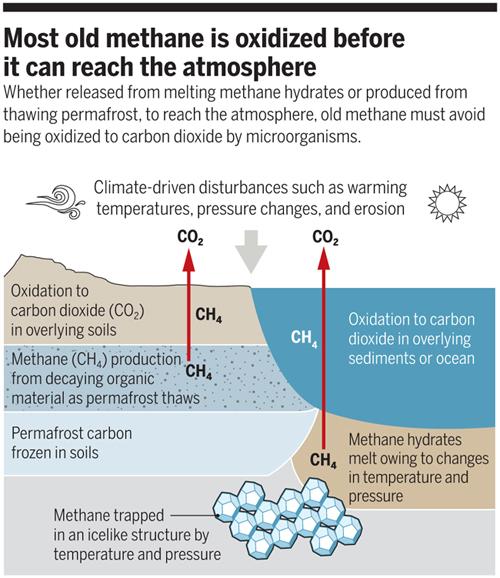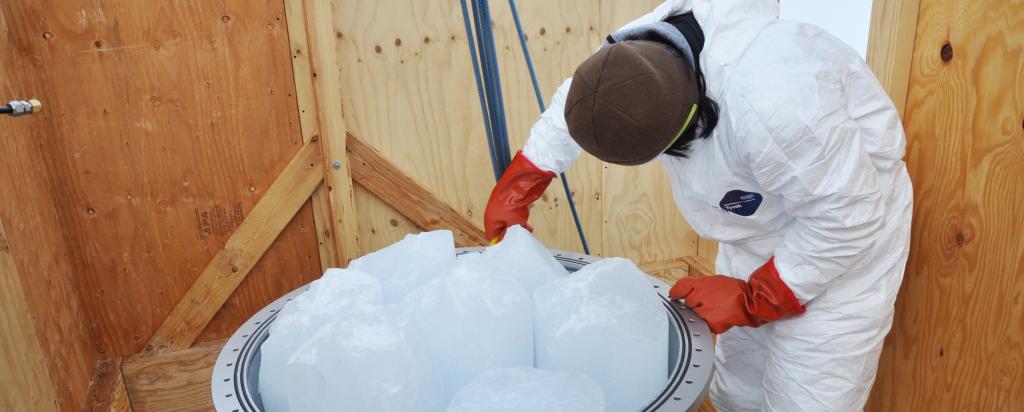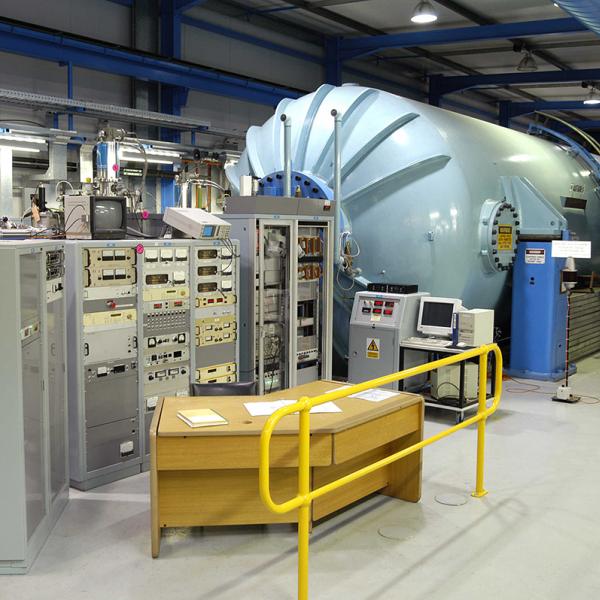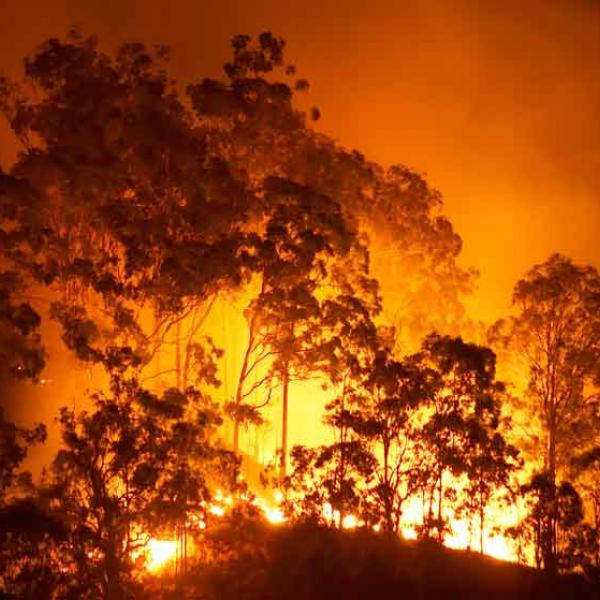

Published on the 3rd March 2020 by ANSTO Staff
Key Points
-
Old carbon reservoirs are unlikely to cause a massive greenhouse gas release in a warming world
-
University of Rochester group found that emissions of natural fossil methane sources have been overestimated in the period of Earth’s last deglaciation 15,000-8000 years ago
-
ANSTO contributed to the study by measuring the amounts of radiocarbon extracted from methane that was trapped in gas bubbles in the ice and participated in some fieldwork
ANSTO has contributed to further research on fossil methane emissions that revealed old methane reservoirs are unlikely to cause massive release of this potent greenhouse gas in a warming world.
Co-author Dr Andrew Smith credits the high-profile collaborations to ANSTO’s capability to measure radiocarbon in ultra-small samples of carbon.
“Our capability for precise measurement of the radiocarbon (14C) content in miniscule carbon samples underpins both research studies, which were led by the very productive group at the University of Rochester,” said Smith.
The new research published in Science by Michael Dyonisius of Professor Vasilii Petrenko’s laboratory at the University of Rochester, found that emissions of natural fossil methane sources have been overestimated in the period of Earth’s last deglaciation 8,000-15,000 years ago.
During that time the Earth went from a colder to a warmer state, a partial analog of the situation we face today with human-caused warming in the Anthropocene Era.
Using samples of the past atmosphere preserved as bubbles in ice, they concluded that very little methane from natural stores in the Earth, such as undersea methane hydrates, thermos-karst lakes and permafrost, actually reached the atmosphere as the planet warmed.
Hydrates (or ‘clathrates’) are cages of water molecules that trap gases such as methane and form under conditions of high pressure and low temperature. Vast amounts of methane are stored on the Earth, particularly undersea on the margins of the continents.

Source: Joshua F. Dean Science 2020;367:846-848 Copyright © 2020 The Authors, some rights reserved; exclusive licensee American Association for the Advancement of Science Credit: Credit: N. Cary/SCIENCE
The researchers believe this may be due to natural buffers, such as oxidation by ocean microbes as the methane bubbles rise to the surface, in the case of the methane hydrates.
“While the Nature paper looked at a relatively modern period, from 1750 AD to present, the Science paper goes back much further in time,” said Smith, who is a co-author and expert in radiocarbon measurements.

Research team at Taylor Glacier Antarctica (left to right) Bernhard Bereiter (University of California, Davis), Ed Brook (Oregon State University), Heidi Roop, Peter Neff (University of Rochester), Vas Petrenko (University of Rochester), James Andrew Menkin (Oregon State University), Mike Jayrad (driller, Wisconsin), Joe McConnell (Desert Research Institute), Kathryn Schroeder (camp manager) Sarah Shackleton (Scripps Institution of Oceanography), Michael Dyonisius (University of Rochester), Andrew Smith (ANSTO) Credit: Andrew Smith
“Even two large and sudden methane increases at about 15,000 years and 12,000 years ago did not come from a sudden release of old fossil methane trapped in marine hydrates, hydrates under ice sheets or permafrost,” said Smith
“We showed that the carbon-14 activity of the ancient methane was essentially the same as the carbon-14 activity of the atmospheric carbon dioxide at that time, even during those events. This meant that the methane was mostly coming from biological sources, such as wetlands and animals” said Smith.
“Our measurements confirmed that methane from old natural geological sources was negligible as there were no significant fluctuations in the carbon-14 levels.”
Because natural fossil methane does not contain any radiocarbon, it can be distinguished from other methane sources using accelerator mass spectrometry.
This technique allows for the identification of individual carbon-14 atoms and so is inherently sensitive.
Even so, a lot of ancient ice is needed to obtain sufficient air for analysis. The ice cores in this study came from an established blue ice (‘ablating’) site at Taylor Glacier in Antarctica, where the fieldwork team was able to collect very old ice from shallow depths.
To obtain each sample, about 1 tonne of ice was melted on site, yielding about 100 L of air that was pressurised into a storage cylinder and returned to the laboratory. This takes a team of four people three days to achieve. Smith participated in one of the three expeditions.
“After separation of the methane from the air, our samples contained about 20 millionths of a gram of carbon. We are one of the few laboratories in the world that can undertake these demanding measurements,” said Smith.
“It is very pleasing to see this research come to fruition after so many years.
It is something that ANSTO can be justifiably proud of, and along with my immediate ANSTO collaborators Dr Bin Yang and Dr Quan Hua, I would like to thank everyone else, from the technicians in the Centre for Accelerator Science through the cleaning staff to senior management: without the support everyone provided, this research would not be possible”.

Andrew Smith in the science tent making running repairs to one of the diaphragm pumps used to transfer the ancient air samples into high pressure cylinders. Only the air was returned to the laboratory: the 50,000 year old pure meltwater was used for drinking, cooking and washing in camp. Credit: Andrew Smith
Can we look to the past to predict the future?
“During the last deglaciation, the change was natural. Now the change is being driven by human activity, and we are going from a warm state to an even warmer state,” said Dyonisius in a media statement from the University of Rochester website.
Although sea levels were lower, the researchers suggested that the last deglaciation period could serve as a partial analog when comparing possible methane emissions in response to global warming.
“This is basically good news in the face of dire predictions about catastrophic methane releases that could occur with global warming,” said Smith.
Some theories, such as the ‘clathrate gun theory’ suggest possible enormous releases from marine hydrates in response to global warming and changing ocean temperature and circulation.
Is there more research to come on methane?
“Given its importance as a major greenhouse gas, I‘d say that is highly likely,” said Smith. “Stay tuned.”
Perspective on Climate in Science



